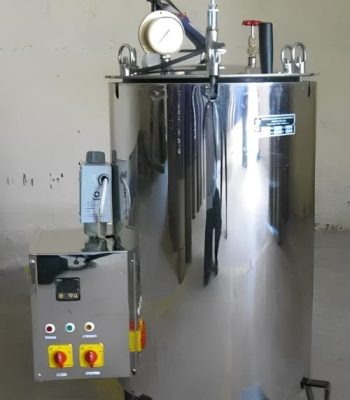Home» Calibration Services» Autoclave Calibration & Validation
Autoclave Calibration & Validation
Choksi Laboratories Ltd. offers autoclave calibration and validation services for any type of autoclave in the market. These validation services help our clients comply with pharmaceutical (USP/EP), healthcare & food regulatory requirements as well as International Standard for steam sterilization (ISO 17665).
FDA and EU regulatory agencies have started requesting Heat Distribution Studies for Import Authorization Procedure

Difference between Autoclave Calibration and Validation:
Autoclave Calibration
CLL's ISO/IEC 17025 accredited calibration laboratory services provides calibration for timers, pressure and temperature sensors or gauges for autoclaves.
Features of CLL's Autoclave Validation Services:
CLL’s USP and EP compliant validation services provide following services for Autoclaves / Steam Sterilizers:
A common procedure to evaluate steam sterilizer installation is the evaluation of the empty chamber’s performance. Each air removal method used in the sterilizer is evaluated by temperature measurement near the corners of the sterilizer chamber, near the controlling probe, and other locations as appropriate. The distribution of temperatures in the empty chamber should be determined only by sensors located in the chamber, and the temperatures of the chamber drain or outside the chamber proper are not directly relevant in this validation activity.
Loads for direct steam sterilization can be validated using a maximum and minimum load as determined by either the number of each item or their mass. Best practices include placing larger items on the lower shelves, allowing condensate from these items to exit the sterilizer with minimal contact with other load items.
Items that are steam sterilized can be quite complex and may have interior void volumes, obscured surfaces, crevices, and difficult-to-reach product contact surfaces that must be sterilized. The ability of saturated steam to penetrate the wrapping materials or containers and to reach the surfaces should be established for each item. Although this is relatively easy for simple items such as spatulas, beakers, and other simple geometric shapes, it can be substantially more difficult for filling assemblies, filter housings, tubing, and hoses. CLL conducts studies to determine cold spots in items to ensure that heat penetration takes place throughout the load items using thermocouples in contact with the item’s surface. During this evaluation, all load items are wrapped and oriented in a manner that facilitates steam ingress and air and condensate removal. Items are wrapped and oriented in an essentially identical manner for reproducible sterilization.
The goal of the validation activity is the confirmation of acceptable heat penetration using temperature measurements and biological indicator challenges. Customarily this study is performed under conditions where the exposure time and/or temperature are reduced slightly from the routine set points. Thermocouples and biological indicators are placed with load items at the locations determined to be most difficult to heat during component mapping. Thermocouples should be in contact with the item’s surface.

Regulatory references:
- United States Pharmacopoeia (USP) <1229> and sub-parts
- European Pharmacopoeia (Ph.Eur.) <5.1.1> and <5.1.2>
- European Medicine Agency (EM) Guideline on the sterilisation of the medicinal product, substance, excipient and primary container
